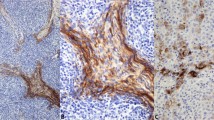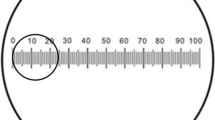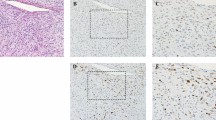Abstract
At histopathological diagnosis of non-Hodgkin's lymphoma (NHL) the mean number of mitoses in 10 high power fields (X 40) was determined in thin sections (2 micron) and designated 'mitotic index' (MI). In 38 patients the thymidine labelling index (LI) of the lymphoma cells was also determined. There was a close correlation between MIs and LIs (r = 0.81, P less than 0.001) indicating that MI reflects the proliferative activity in NHL. Among 101 patients with NHL classified according to the Kiel nomenclature MIs were generally lower in lymphomas of low grade malignant type than in the high grade malignant lymphomas. The variation of MIs within morphological subgroups was especially pronounced in high grade lymphomas. Only 18 of 49 patients (37%) with MI greater than or equal to 2 have survived for 2 years in contrast to 37 of 52 patients (77%) with MI less than 2 (P = 0.001). For patients with histologically low grade lymphomas and MI greater than or equal to 2.0 the median survival was 23 months and for those with MI less than 2.0 58 months (P = 0.09). Patients with high grade lymphomas and MI greater than or equal to 2.0 had a median survival of 15 months compared to 57 months for those with MI less than 2.0 (P = 0.04). In a multivariate analysis of 50 patients with centroblastic-centrocytic (CB-CC) or centroblastic (CB) lymphomas the importance of different prognostic factors was analysed. Among the variables age, MI, growth pattern (follicular vs. diffuse), cell type (CB-CC vs. CB), clinical stage (I vs. II-IV), initial chemotherapy (active vs. less active) only age and MI gave significant prognostic information. It is concluded that the assessment of mitoses in NHL gives prognostic information in addition to histopathologic classification. The method is simple and the proliferative activity and histopathological diagnosis can be ascertained routinely on the same occasion.
This is a preview of subscription content, access via your institution
Access options
Subscribe to this journal
Receive 24 print issues and online access
$259.00 per year
only $10.79 per issue
Buy this article
- Purchase on Springer Link
- Instant access to full article PDF
Prices may be subject to local taxes which are calculated during checkout
Similar content being viewed by others
Rights and permissions
About this article
Cite this article
Åkerman, M., Brandt, L., Johnson, A. et al. Mitotic activity in non-Hodgkin's lymphoma. Relation to the Kiel classification and to prognosis. Br J Cancer 55, 219–223 (1987). https://doi.org/10.1038/bjc.1987.41
Issue Date:
DOI: https://doi.org/10.1038/bjc.1987.41



